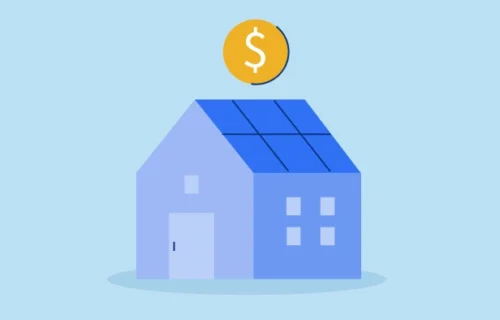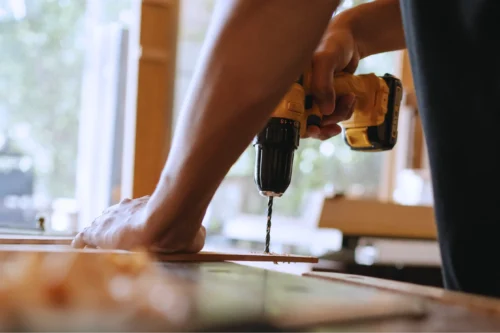
Connect with a Lima One expert today!
If you’d like to know more about this topic or see how it applies to your project, let’s talk.
Fix and FlipReal Estate 101Rental
3 Ways to Recession Proof Your Real Estate Investment Strategy
 It’s unclear whether the United States will actually experience a recession in 2023 by the textbook definition, but it is clear that economic uncertainty has prevailed. Rising interest rates and bank failures are among the ominous clouds that seem to hang over the entire economy.
It’s unclear whether the United States will actually experience a recession in 2023 by the textbook definition, but it is clear that economic uncertainty has prevailed. Rising interest rates and bank failures are among the ominous clouds that seem to hang over the entire economy.
The good news is that the housing market has proven to be durable through most economic cycles. In the current cycle, that’s proven to be especially true for real estate investors who continue to find deals and make money.
While investors can have confidence amid economic turbulence, they need to take extra steps to carefully plan their strategies for flipping houses or building a portfolio. Think of these steps as recession-proofing your real estate investment business. Just as you make sure to take the steps to waterproof a tent before going camping when the forecast calls for chances of rain, investors can take the following steps to recession-proof their strategies in an economic forecast that still has the chance of storms.
To explain three key ways to recession-proof your investment, here are three economic fundamentals that our team focuses on when evaluating loans. These factors will help investors, no matter their experience level, get a more detailed look at the economy than the 30,000-foot question of whether we are in a recession—and this detailed yet easy-to-do analysis will help smart investors succeed.
1. Watch local unemployment numbers
One of the key factors to the success of real estate investors in any market is whether people who live in that market can afford to rent the houses they own or buy the houses they flip. The best way to get a sense of the health of people’s paychecks is to watch unemployment numbers.
When unemployment is low, it stands to reason that wages will remain solid or even increase. Fewer people who need work equals more competition for employers, who must increase pay and other incentives to hire the workers they need. As a result, more people can afford to rent nicer apartments or move from renting an apartment to renting a single-family home. More people can also become homebuyers, adding to the market for investors who put a completed fix-and-flip project on the market.
On the other hand, when unemployment increases, people in the general public have less money in their pocket. People who are living in rentals of any kind are more likely to be late on payments. More apartments and single-family homes stay on the market longer, and that lower occupancy level affects investors’ bottom lines.
Investors need to look at unemployment numbers not just on the national level but in local markets. If your investment property is in Pittsburgh, unemployment in California won’t have a direct impact on your profitability. But local unemployment numbers matter a lot. Investors can also look at big employers who are coming into a market or major business or plant closures near their properties to predict near-term changes in unemployment in a specific market.
HOW TO DO IT:
Check local unemployment statistics at the U.S. Bureau of Labor Statistics
2. Be conservative with rents and home prices when running the numbers
When the economy is growing and the real estate market is booming, as it was in 2020-22, it’s safe to assume that rents will go up and that home prices will appreciate. But when the economy is slower, these are no longer safe assumptions. And that means that investors need to be much more careful with their numbers.
Rental property owners who are getting DSCR loans need to make sure their properties will cash flow effectively. To do this, they make assumptions about what rents they can charge and about occupancy rates at their properties. In recent years, rents increased nationally, and investors could calculate DSCR planning on rent increases. Those rent hikes, plus low interest rates, made it really easy to get the numbers to work on rental deals.
In 2023, it’s not as easy. First, interest rates are higher, which adds to the expenses for an investor who owns a rental property. In addition, rents have flattened out nationally. These rent levels have largely maintained the increases of the past 2-3 years, but they aren’t increasing now. This means that planning for additional rent increases at properties in this market is unwise, unless you’re significantly improving the property or in an abnormally hot market.
Flippers don’t need to worry about rents, but they do need to be hyper-focused on the after-repair value of the homes they plan to put on the market. With home prices now flat, investors need to right-size their flips to make sure they’re getting a good return on investment from the rehab they do. Watching the home price index for a particular market will help investors understand what typical home prices are doing and make their plans appropriately.
The key here is having a clear view on what’s happening in a market, and then making choices that will lead to profit whether the market improves or stagnates or even lags. Times of economic uncertainty are not the time to push the limits on DSCR or ARV for deals. It’s far wiser to focus on deals that are solid in any economy.
HOW TO DO IT:
Check Rent Trends with this free Zillow tool
Check Home Price Index with the St. Louis branch of the Federal Reserve
 3. When you get worried, look at inventory
3. When you get worried, look at inventory
It may seem like the housing market of 2023 is creeping along, because transactions of all kinds have dropped. But it’s important to know that the reason that transactions are so slow is that there aren’t enough homes for sale.
Analysts consider six months of supply to be “normal” inventory. Supply equals the number of homes sold in a market per month on average. During the height of the pandemic, when home prices were skyrocketing, inventory was at one month of supply or less. Things have slowed down a little, but in most markets inventory is still under three months of supply. Think back to your intro to economics class—when supply is low and demand is high, prices remain strong. That’s what’s happening in the housing market of 2023.
The fact that home prices are stable (which means they have retained the value created when home prices increased 35% between 2020-22) and that time-on-market remains low indicates that demand is strong for homes that hit the market. So investors who are completing flips should find an appetite from buyers.
And tight inventory plus high interest rates continue to force many would-be homebuyers into renting single-family homes. This is another positive sign for investors.
Again, this is a number to watch locally, because some markets have tighter inventory than others. But the nationwide trends should reassure investors that profitable deals are still out there, waiting to be found.
HOW TO DO IT
Check Home Inventory and Days on Market with Redfin’s free tool
The Final Word – Reduce Risk Where You Can
These three ways to recession-proof your real estate investment strategy will help investors of all experience levels better evaluate risks in the market. When the economic outlook is rosy, risks are lower. But in times of economic turbulence, risks emerge, and investors must be wise to mitigate and manage these risks.
To do this, use the fundamentals and leading indicators we’ve discussed above, and then determine:
- What are the risks for this investment?
- Which risks do I need to avoid? Which am I comfortable taking?
- How can I mitigate the risks I am taking to give my investment the best chance to succeed?
- What are the upside and downside results of my investment based on risk?
- How can I ensure that the ROI on the downside is sufficient to consider my investment a success?
If you manage risks and can profit on the downside, your investment will be ready to weather any economic storm—and you will still have profit upside if the economy ends up better than expected.
And if you’re looking for a lender who will help you finance investments that will succeed in any environment, contact Lima One. We’re ready to lend on fix and flip projects and rental properties and portfolios, as well as new construction builds and multifamily properties. Contact us today for more information.
Subscribe for More Insights
Get the latest industry news & Lima One updates.







 3. When you get worried, look at inventory
3. When you get worried, look at inventory

